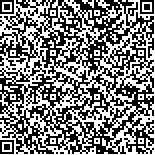下载中心
优秀审稿专家
优秀论文
相关链接
摘要

风云三号C星(FY-3C)携带的微波温度计(MWTS)辐射资料能够穿透非降水云,因此非常适合热带气旋的监测和结构研究。本文使用MWTS观测资料和逐步多元线性回归方法反演晴空和有云两种不同大气状况下的垂直温度廓线。晴空条件下,使用MWTS通道3-10的观测亮温进行大气温度廓线的反演,而有云情况下,仅使用通道5-10,并且两种状况下的逐步线性回归反演都通过1%的信度检验。研究结果表明在晴空状况下,大气各层温度反演的均方根误差都在1.4 K以下,足够精确到可以用于热带气旋上层暖心结构的反演。通过对台风“威马逊”周围温度廓线的反演研究,可以清楚地观察到200 hPa高度层上台风的暖心结构和沿着台风中心的温度梯度热结构,明显优于美国国家环境预报中心(NCEP)再分析资料得到的台风暖心结构。在大气温度廓线反演基础上,先由采用静力平衡计算各层大气台风“威马逊”周围的位势高度场,再由梯度风平衡计算台风周围的水平切向风,结果显示最大风速半径约80 km,最大风速达51 m/s,且由低层向高层逐步减弱。
Owing to the deficiency of conventional observations over oceans, particularly under typhoon conditions, numerical simulation has become the foremost approach to the study of the thermal and dynamic structures of typhoons, and the accuracy of the numerical simulation depends on the initial structure of the typhoon and the accuracy of the model. As the first operational satellite, FY-3C was successfully launched into a morning-configured orbit on September 23, 2013. The MWTS onboard the FY-3C is designed with significantly more channels, finer spatial resolution, and better sensor precision than those of FY-3A and FY-3B.Moreover, the observed radiance is insignificantly affected by non-precipitating clouds, making MWTS measurements more suitable to detect the thermal features of typhoons.
Radiance in the microwave band is linearly proportional to the entire layer of atmospheric temperature. The weighting functions of all the sounding channels of MWTS are substantially steady, and atmospheric temperature at a given pressure can be expressed as a linear combination of brightness temperatures measured at certain sounding channels. In this study, a stepwise linear regression analysis with a 1% significance level is used. Under a clear-sky condition, the brightness temperatures at channels 3-10 are used to retrieve the temperatures at 21 pressure levels ranging from 100 hPa to 1000 hPa, but channels 3 and 4 are not used for retrieval under precipitation conditions. When the temperature profiles are retrieved, the tangential winds around typhoon "Rammasun" are calculated using hydrostatic equilibrium and gradient balance equations based on the retrieved temperature profiles.
Under a clear-sky condition, the root-mean-square error of the retrieved temperature is 1.4 K at the most and even lower than 1.1 K in the upper troposphere and lower stratosphere. These error values are sufficiently low; thus, the thermal structure of typhoons can be monitored. Applied to the super typhoon "Rammasun", the method excellently described the warm core eye and the temperature gradients across the eyewall. The results generated by the proposed method are more accurate than the results generated from the NCEP reanalysis data. The warm core is identified throughout the troposphere, with maximum temperatures ranging from 8℃ to 10℃ near 200 hPa; the warm core extends to the sea surface. This finding on the warm core is seemingly more realistic compared with the typical one. From the anomaly field, the radius of the typhoon eye at the sea surface is approximately 100 km, and the eye tilts outward with height. The maximum wind speed radius is approximately 80 km, and the maximum wind speed can reach up to 51 m/s.
Among the most important parameters in monitoring typhoon intensity, studying typhoon inner core dynamics, and constructing the initial vortex for a typhoon simulation, the three-dimensional warm core and tangential wind features derived from FY-3C MWTS measurements are investigated in this study. Evidently, MWTS has considerable potential for improving our knowledge of typhoons and hurricanes. However, only a single typhoon case is analyzed in this study; more cases should be studied to verify the retrieval method.

